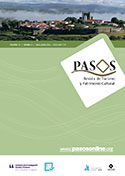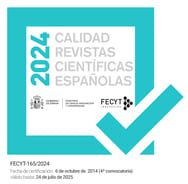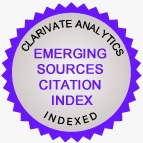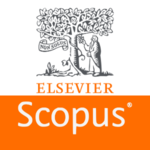Oculto y encubierto. La ideología colonial en el imaginario turístico contemporáneo
DOI:
https://doi.org/10.25145/j.pasos.2025.23.039Palabras clave:
Imaginario turístico, arte orientalista, colonialismo, imperialismo, MagrebResumen
El brutal proceso de colonización del norte de África por los franceses en el siglo XIX impulsó paradójicamente la apertura de los territorios dominados al turismo. En la Francia de la época abundan las obras de pintores orientalistas que retrataron las colonias como lugares pintorescos y exóticos, pero a la vez atrasados y llenos de habitantes "bárbaros", "apáticos" y "bestiales". Tenemos un doble objetivo con este ensayo: por un lado, demostrar cómo las obras de arte orientalistas, a pesar de sus irrefutables cualidades estéticas, materializaron y propagaron imaginarios turísticos negativos y estereotipados sobre el norte de África. Por otro, desvelar cómo esta ideología colonial, inherente al orientalismo, sigue presente en el Imaginario Turístico Contemporáneo sobre las antiguas colonias norteafricanas. Para lograr este propósito, utilizamos diferentes métodos de investigación, incluyendo el estudio de fuentes primarias de época (textos e imágenes), así como la lectura atenta de fuentes actuales como base teórica para la reflexión.
Descargas
Datos de publicación
Perfil evaluadores/as N/D
Declaraciones de autoría
- Sociedad académica
- PASOS. Revista de Turismo y Patrimonio Cultural
- Editorial
- Instituto Universitario de Investigación Social y Turismo. Universidad de La Laguna (España) - Instituto Universitario da Maia ISMAI (Portugal)
Citas
Adams, J. (2004). The imagination and social life. Qualitative Sociology, 27(3), 277-297.
Boudjedra, R. (1996). Peindre l’Orient. Zulma.
Castoriadis, C. (1987). The imaginary institution of society. Polity Press.
Cremers, G. (2020). Paradise glossed: tourism imaginaries, alienation, and the construction of landscape in Santa Cruz la Laguna, Guatemala. Journal of Tourism and Cultural Change, 18(6), 611-628.
Crompton, J. (1979). An Assessment of the Image of Mexico as a Vacation Destination and the influence of Geographical Location upon that Image. Journal of Travel Research, 17(4), 18-43.
Dazzi, C.; Loureiro, I. & Barroso, S. (2021). Publicidades turísticas do Magrebe: (des)continuidades do imaginário da pintura orientalista do Oitocentos. CULTUR, Revista de Cultura e Turismo, 15(1), 1–27.
Durand, G. (1994). L’ imaginaire. Essai sur les sciences et la philosophie de l’image. Hatier.
Fanon, F. (1968). Os condenados da Terra. Civilização Brasileira.
Foucault, M. (2008). Arqueologia do saber. Forense Universitária.
Foucault, M. (2006). Ditos e escritos IV. Estratégia, poder-saber. Forense Universitária.
Gao, B. W.; Zhang, H.; Decosta, P. (2011). L’Espoir L. Phantasmal destination: A postmodernist perspective. Annals of Tourism Research, 39 (1),197–220.
Gaonkar, D. P. (2002). Toward new imaginaries: An introduction. Public Culture, 14(1), 1–19.
Ghanem, J. (2017). Conceptualizing “the Tourist”: A critical review of UNWTO definition. Master Thesis at Universitat de Girona.
Gravari-Barbas, M.; Graburn, N. (2012). Imaginaires touristiques. Via - Tourism Review, 1(1), 1-34.
Gunn, C. (1998). Vacationscapes: Designing tourist regions. Van Nostrand Reinhold.
Khalilzadeh, J.; Pizam, A.; Fyall, A. & Tasci, A. (2023). Destination imagination: Development of the octomodal mental imagery (OMI) scale. Tourism Management Perspectives, 45(12), 1-15.
Maffesoli, M (2001). O imaginário é uma realidade. Revista Famecos, 15(1), 74-78.
Masberg, B. (1998). Defining the Tourist: Is It Possible? A View from the Convention and Visitors Bureau. Journal of Travel Research, 37(1), 67-70.
Weisgrau, M.; Henderson, C. (2016). Raj Rhapsodies: Tourism, Heritage and the Seduction of History. Routledge.
McCabe, S. (2005). Who is a tourist: A critical review. Tourist Studies, 5(1), 85-106.
MEAGHER, Jennifer. (2000). Orientalism in Nineteenth–Century Art. In Heilbrunn Timeline of ArtHistory. The Metropolitan Museum of Art.
Mills, K. O. (2012). Formal Revolution in the Work of Baudelaire and Flaubert. Lexington Books.
Naef, P. (2012). Voyage à travers un baril de poudre: Guerre et imaginaire touristique à Sarajevo. Via – Tourism Review, 1(1), 1–20.
Nenevé, M. (2006). Uma visão geral sobre a teoria do pós–colonialismo e sua contribuição para os estudos em educação. Revista Intertexto, 3(3), 10-25.
Piwińska, M. (1975). Wschodnie maskarady. Teksty teoria literatury krytyka interpretacja, 21(3), 29-53.
Reynolds, W. (1965). The role of the consumer in image building. California Management Review, 7(3), 69–76.
Ricoeur, P. (1994). Imagination in discourse and in action. In G. R. & J. F. R. (Eds.), Rethinking imagination: Culture and creativity (pp.87-117). Routledge.
Robert, J.-D. (1976). L' « imaginaire », sa nature, ses structures, ses fonctions et les implications de sa renaissance actuelle, d'après Gilbert Durand. Laval théologique et philosophique, 32(2), 145-164.
Saïd, E. (1994). Culture & imperialism. Vintage.
Saïd, E. (1990). Orientalismo: o oriente como invenção do ocidente. Companhia das Letras.
Salazar, N. (2011). Tourism Imaginaries: a Conceptual Approach. Annals of Tourism Research, 39(2), 863–882.
Salazar, N. (2010). Envisioning Eden: Mobilizing Imaginaries in Tourism and Beyond. Berghahn Books.
Salazar, N. (2015). Imaginary, tourism. In Encyclopedia of Tourism. Springer International Publishing.
Sebova, M. (april, 2019). 10 things I loved about travelling in Iran. The Journal By Intrepid Travel, https://www.intrepidtravel.com/adventures/why-youll-love-iran-travel/
Tribe, John. (2006). The truth about tourism. Annals of Tourism Research, 33(2), 360-381.
Urbain, J-D.(1991). L’idiot du voyage, histoire de touristes. Payot.
Wójcik, A.; Sandoz, A. (2017). An Orientalist Painter in Algeria. RIHA Journal, 0149(1), 1–24.
Descargas
Publicado
Cómo citar
Número
Sección
Licencia
Derechos de autor 2024 Camila Dazzi

Esta obra está bajo una licencia internacional Creative Commons Atribución-NoComercial-SinDerivadas 4.0.
Confirmo que el trabajo es original (de mi/nuestra autoría), y que no se someterá a otras revistas o publicaciones hasta la resolución definitiva del proceso de revisión en PASOS, RTPC.
Autorizo la publicación de mi trabajo por PASOS, RTPC de acceso abierto y gratuito en cualquiera de los formatos que estime oportunos, por un plazo indeterminado y a título de colaboración no remunerada.
Asimismo, el/los autor/es entiende/n que el trabajo publicado podrá vincularse o depositarse en cualquier servidor o ser incluido en otras publicaciones (republicación), siempre y cuando el nuevo lugar y/o la nueva edición referencie la publicación original y reconozca la autoría y la propiedad del copyright de las publicaciones de PASOS RTPC.
Los/as autores/as entienden que se realizará una comprobación de plagio-autoplagio, pudiendo retirarse el artículo en cualquier momento del flujo editorial










